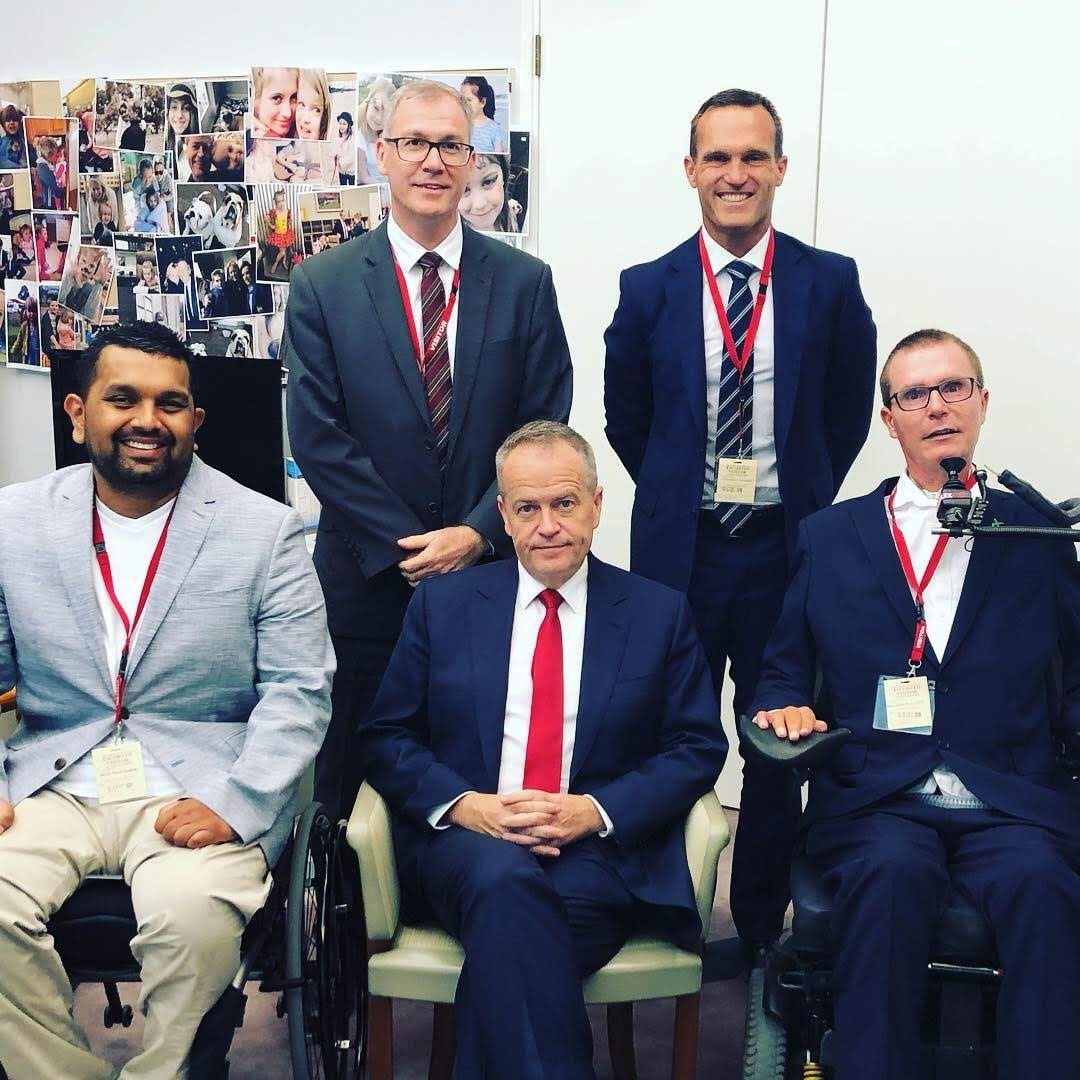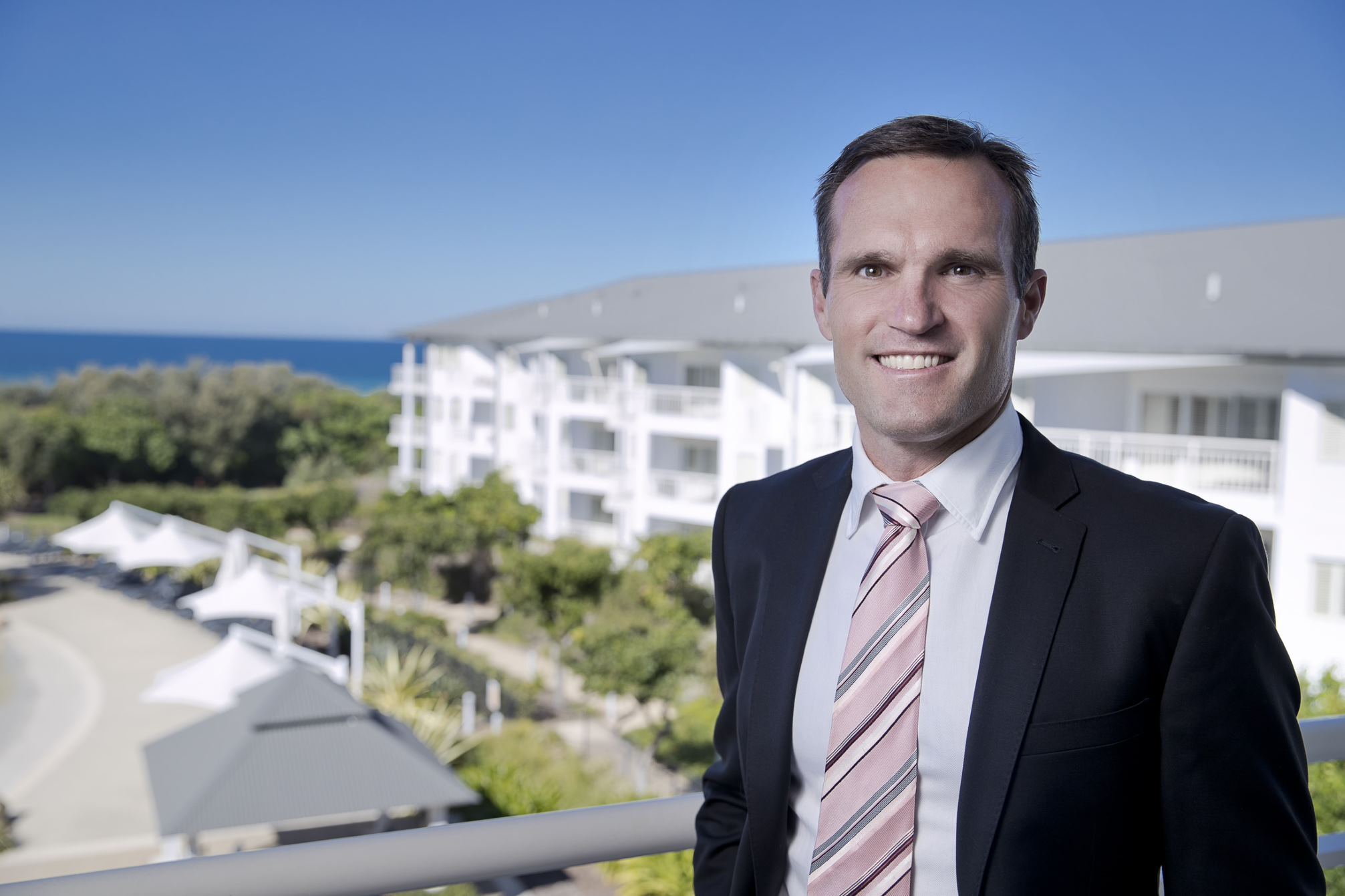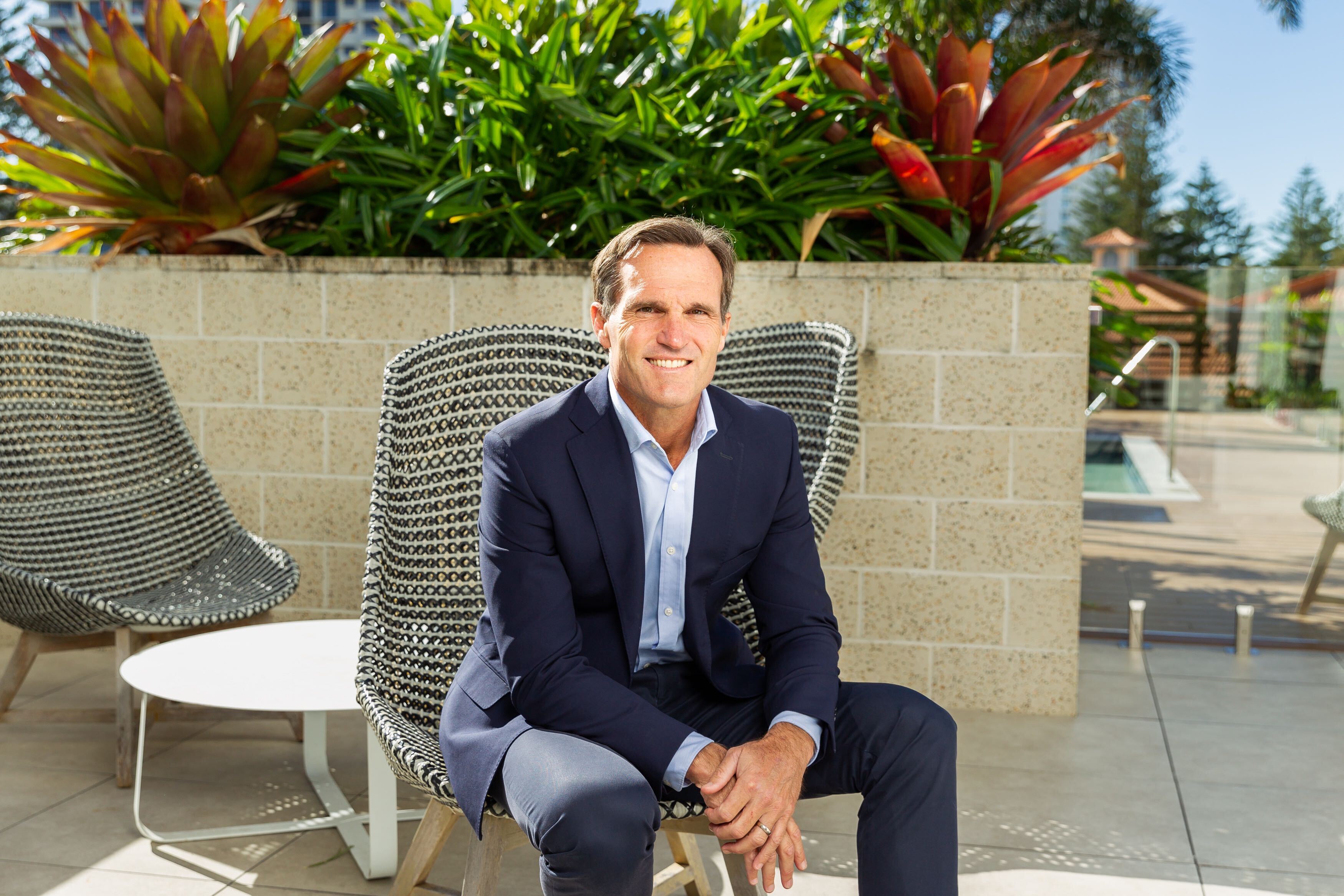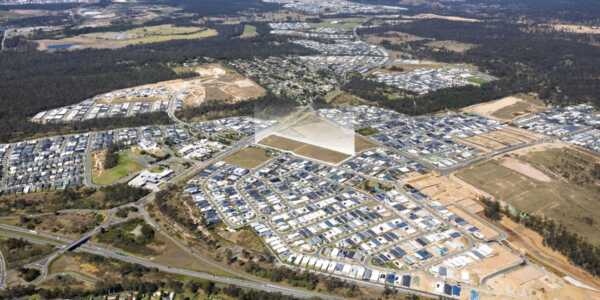From a young marketing executive working at the John Singleton Advertising agency to Macquarie Bank, franchise operator and Executive Director of the family business Ray Group, Tom Ray’s stripes are nearly endless. In 1994 one of his dearest friends, Perry Cross, was injured in a rugby accident which broke his neck and left him unable to walk or breathe unassisted. As a result, Tom, Perry, and a small group of close friends established the Perry Cross Spinal Research Foundation (PCSRF), a non-for-profit public company that raises money and awareness for Australian spinal research and is widely regarded as a global leader in the field. Inspired by this, Tom is now Managing Director of Accessible Homes Australia (AHA), an organisation co-founded by Perry and their two friends Tim Douglas and Jason Doerr three years ago, that designs, builds and provides Specialist Disability Accommodation (SDA). They now have 20 dwellings across the South East Queensland Region with projects underway to at least double that number over the next 24 months.
THE EARLY YEARS
Born in Sydney from the love between high profile property developer Brian Ray and wife Kathy Ray, Tom Ray’s journey was rich and varied with a large part of his upbringing revolving around real estate development. Growing up, his father’s company, Donlan Developments was active in residential subdivisions in the western part of Sydney, but he eventually ventured north, developing in the Ipswich shire and bayside Brisbane. After years of travelling in between the states, the Ray family moved to Nobby Beach on the Gold Coast where they settled and set the foundation for a prosperous future ahead. It was from here, that Tom attended The Southport School and eventually Bond University.
“My father was a great communicator and marketer and a big believer in education. I didn’t know what I wanted to do when I left school, so his advice was this: ‘Go and learn to sell. Because no matter what you end up doing in life, it is the fundamental of everything you do.’ It was some of the best advice he ever gave me.”
It was also advice that would serve Tom well for all his future endeavors.
Tom flourished and graduated on the Dean’s List with a Business Marketing and Communications degree, landing his first role with advertising firm, John Singleton in Sydney; the most prominent Australian advertising group of its time. His first 5 years there in his early 20’s, led him to be account director on global giant KFC and to run press and radio on the Australian Labor Party’s 1996 Federal Election Campaign for the Keating Government.
Throughout this time, regular father-son dinners and drinks also led him to connecting with Bill Moss of Macquarie Bank.
“Bill Moss is one of the brightest, most charismatic people I’ve ever met. An opportunity arose to purchase a small restaurant chain in Brisbane and because I had worked on KFC, Dad and Bill believed my marketing experience could be greatly utilised so I left Singletons, we purchased the chain, developed a franchise system, and I ran that operation for a couple of years.”
Shortly thereafter, Tom joined Bill Moss at Macquarie Bank where he worked on building and marketing of the Medalist residential golf course estates.
“That was my first introduction to working in a property group and Bill said to me “until you’re 30 do as many things as you possibly can. Any opportunity that looks interesting, take it. But when you get to 30, find something you want to do and stick to it.”

Dr. Dinesh Palipana OAM, Dr. Jens Tampe, Hon. Bill Shorten MP, Tom Ray, Perry Cross AM
With only a few years to go before hitting this milestone, another venture presented to Tom - the Australian start up business 1800 Reverse, a company that took Tom to the UK and ended up being listed on the ASX, reaching a peak market cap of $500million in the early 2000’s.
It was also here in London that Tom met his wife Megan of 18 years, coincidentally also from the Gold Coast and with whom they now share 3 children. This was the time he decided to return home to the Gold Coast and the family business.
By this stage, the Gold Coast had changed. It had more opportunities, more people, a broader based economy, and Tom’s father Brian had just purchased an expansive parcel of land in the rapidly growing coastal hotspot, Kingscliff.
“This development, Salt Village, was the product of my dad and Gordon Douglas, and was a culmination of 20 years of beachside living next door to one another, thinking and constantly fantasising with one another in the surf about how to make something so great, even better. Salt Village became that place where, unlike Nobbys and neighbouring Mermaid Beach, there are minimum 16 metre wide blocks, no powerlines above ground, footpaths along the ocean, big open spaces and accommodation along the shoreline.”
Life was good for Tom Ray however throughout it all, the desire to work with his mate Perry Cross was insistent. Perry was determined to find a cure for spinal injuries and Tom determined to help. So, in 2009 they both, together with a small group of mutual professional friends, including partners from KPMG and Hickey Lawyers, a surgeon and people with investment banking, event management, fundraising and university backgrounds, committed their resources, networks and intellectual capability towards a cause that would help so many - the Perry Cross Spinal Research Foundation.
THE PERRY CROSS FOUNDATION
Perry was a budding sportsman. However, in 1994, an unfortunate tackling accident on the rugby field broke his neck and left him a C2 quadriplegic. Still to this day, 30 years later he is on mobile life support and has defied the odds in many ways…
“Perry is incredible. His energy, mental attitude, and disposition, all the rule books go out the window. He is unstoppable,” states Tom.
Despite being told not to travel on a plane, Perry was determined to meet Christopher Reeve who had the same injury as he. It was a fortuitous trip where he happened to also be travelling with Greg Hunt and Alexander Downer who invited him to come and speak at the United Nations, which he did. This gave Perry even more motivation to find a cure for spinal injuries and start the foundation. In parallel, he also wrote a book, became the first quadriplegic in Australia to graduate with a university degree, and was awarded Young Queenslander of the Year.
“This foundation has given the group of us an opportunity to mix with each other from different fields of expertise and put it to a great cause. And although property development was doing well, I wanted to give more and help Perry’s mission to have greater impact. I also think it’s important to get outside your bubble of work; we sit at our same desk every day, talk to the same people and deal with the same issues. I always thought this could risk making me become a little narrow focused.”
Last year the Perry Cross Foundation turned over about $1.4million and wrote research cheques for over $750,000 dollars. The foundation is now close to embarking on human trials for a therapy that was originally pioneered by 2017 Australian of the year, Alan Mackay-Sim.
“We met Alan 8 years ago and funded his lab because it looked like the most promising science and technique we had seen. His research takes the only cells in your body that regenerate, from inside the olfactory system in your nose and places them in the same persons spinal cord to re-grow it. Although it works, the challenge is to make enough of those cells survive the transplantation and then ‘re-wire’ the body through rehabilitation. This therapy has been conducted on people in Europe and one person with an 8mm gap in his spinal cord has now regained movement in his legs, so we believe it’s not a matter of if, it’s a matter of when.”

Tom Ray, Perry Cross AM, Dr. Brent McMonagle, Prof. Alan Mackay-Sim AM
ACCESSIBLE HOMES AUSTRALIA (AHA)
Accessible homes Australia was the next piece of Tom’s journey inspired by his activity through the Perry Cross Spinal Research Foundation.
Prior to the establishment of the government’s NDIS (National Disability Insurance Scheme), housing for people with supported living needs was limited and the most cost-effective way to do this was to group people together in a shared home. Funding for housing under the old model was typically provided by the States and design and build outcomes were highly inconsistent and unregulated and in many situations unsafe and unacceptable.
However, people like Perry who are cognitively full functioning and independently minded, would try and live anywhere else but here, to hold onto their independence.
The NDIS created a scheme that aimed to address these issues. Called SDA (Specialist Disability Accommodation), it would be more cost effective for the government to offer an incentive to the private sector to build them instead. It is a highly vetted and quality-controlled process that is not easy to navigate for the end user, nor the provider themselves.
“Becoming and maintaining yourself as a provider is a lot of work and compliance however, we finally registered and fit out an apartment for Perry in Broadbeach. He then became determined to help others with disabilities navigate the process of obtaining a home like his, through this mechanism.”
The cost for the government was becoming significant for standalone units so AHA began to build clusters to achieve economies of scale as they, and a few other providers doing similar types of SDA projects, assured the Minister and CEO of the NDIS that a saving would be achieved by clustering enough of these apartments in close proximity.
“It took a more than a year to present our cost modelling and we weren’t the only ones. It has now been realised that if we approach it the right way, an expense blowout won’t happen but rather the reverse; for a certain type of person living with disability, our model of housing presents the NDIS with a cost saving dividend over the old group housing model. Thankfully, the NDIA has recently accepted this proposition and we continue to work constructively with them on finding better and more sustainable housing solutions for suitable people within the scheme.

Tom Ray - Salt Village, Kingscliff
AHA now has apartments in Palm Beach, Broadbeach and Hope Island, and new projects in development at Hervey Bay and elsewhere in regional Queensland, with all profits currently generated fed back into the organisation to create even more housing opportunities. The apartments are fresh, contemporary homes built for purpose to encourage independent living and include voice activated elements and back up batteries for life support machines amongst many other features.
“We are unlike most other SDA providers as we are a scheme participant (in Perry) as well as the provider, developer, designer, owner all in the one entity. We are also very close to our participants and talk to them every day; it’s very personalised. And although getting this scheme to work has been far more complicated that I envisioned, this, together with my involvement in the Perry Cross Spinal Research Foundation is the most rewarding thing I’ve ever done in my working career.”










